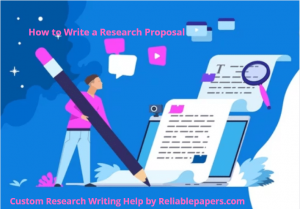Master How To Write Soap Notes Nursing with Expert Guide

Crafting effective SOAP notes is a vital skill that nursing and medical students must master. These meticulously structured records serve as a cornerstone for monitoring a patient’s progress throughout their treatment journey. While various methods exist to track patient well-being, SOAP notes offer a systematic approach that greatly aids clinical reasoning, enhances patient care, and facilitates seamless information exchange among care providers.
In this comprehensive guide, we delve into the art of composing impeccable SOAP notes. Whether you’re an aspiring nurse taking your first steps or a seasoned medical student honing your expertise, this article will equip you with the insights and techniques necessary to excel in this essential aspect of patient care. With a firm grasp of SOAP note writing, you’ll be empowered to communicate effectively within the healthcare team, refine your clinical judgments, and ultimately ensure the best possible outcomes for your patients.
Join us on this journey, as we elaborate on different aspects of writing SOAP notes empowering you to not only understand the intricacies of SOAP notes but also to master them – a skill that will undoubtedly set you apart as a competent and compassionate healthcare professional.
Understanding the Importance of Writing SOAP Notes in Nursing
When nurses write SOAP notes, they’re doing more than just jotting down information. These notes play a crucial role in documenting a patient’s care journey and making sure everyone involved in their treatment understands what’s going on. They use a standardized format to keep things clear and organized, helping different healthcare professionals communicate effectively.
The purpose of a SOAP note in a nursing assignment is to document the care provided to a patient and to communicate important information about the patient’s condition and treatment to other healthcare providers. SOAP notes provide a standardized method of recording patient care, which allows for clear and concise communication among healthcare professionals.
Getting to Know the Parts of a SOAP Note
Think of a SOAP note as a special way nurses write down what happens with a patient. It’s like a recipe with four main ingredients: Subjective, Objective, Assessment, and Plan. Each part tells a different part of the patient’s story.
According to Podder et al. (2020), healthcare workers find SOAP notes super helpful. They aren’t just for writing things down – they’re tools that help nurses and doctors figure out what’s going on with a patient, decide what’s wrong, and plan how to help them.
SOAP notes are important pieces of a patient’s medical history. So, they need to be complete, easy to understand, and short and sweet.
Dr. Lawrence Weed, who taught at the University of Vermont, is known for coming up with SOAP notes in the 1960s. His idea was to make sure important information doesn’t get left out.
You might also be interested in reading about how to write a good nursing essay or how to write nursing term papers.
Breaking Down the Basic SOAP Note Structure
The basic structure of a SOAP note includes four main sections: Subjective, Objective, Assessment, and Plan. Writing a good SOAP note is a bit like following a recipe. There are four steps to it:
- S – Subjective: This is where nurses write down what the patient says about how they feel. It’s a chance for the nurse to listen and understand the patient’s worries and symptoms. This helps the nurse connect with the patient and get important information. This section also includes information about the patient’s symptoms and complaints as reported by a family member. This can include descriptions of the symptoms, how long the symptoms have been present, and any other relevant details.
- O- Objective: In this part, the nurse writes down things they can see, touch, or measure. It’s like writing down facts about the patient’s body, like temperature and test results. This realm deals with tangible data – the vital signs, test results, and physical assessments that provide an objective snapshot of the patient’s condition. Precise measurements and clinical acumen play a pivotal role here, shaping the landscape upon which further actions are built. These facts help the nurse and other healthcare pros understand what’s happening.
- A – Assessment: Here’s where nurses give their thoughts on what’s going on with the patient. They use what the patient said (Subjective) and what they observed (Objective) to figure things out. This is where your expertise shines as you diagnose, analyze, and synthesize the available data. Your assessment acts as the compass, guiding your path toward an effective treatment plan. It’s like piecing together a puzzle to find the right diagnosis.
- P – Plan: This is where the nurse plans what to do next. They write down the steps for treatment, like medicines or therapies. It’s like making a roadmap to help the patient get better. Precision, collaboration, and patient-centeredness converge as you craft a plan tailored to the individual’s needs, fostering their journey toward well-being.
Breaking Down How to Write a Good SOAP Note in Nursing
When nurses create SOAP notes, there’s a structure to follow. While everyone has their own style, these steps can help ensure you’re capturing all the needed info. We’ve covered what goes into each part of a SOAP note, but here’s some extra advice to make sure everything comes together nicely.
Writing the Subjective Part of Nursing SOAP Note
The subjective part of a SOAP note should include information about the patient’s symptoms, concerns, and history, as reported by the patient or their caregiver. A patient’s primary concern, symptom, or issue is referred to as the “chief complaint” (CC). The patient may first report one CC when, in fact, there are more. As their clinician, you need to probe deeply to determine which CC best corresponds to their needs.
Here are some tips for writing the subjective part of a nursing SOAP note:
- Start by noting down what the patient’s main concern is.
- Write down any past medical stuff like surgeries, diagnoses, and medications.
- Describe how the patient is feeling right now – where it hurts, how long it’s been hurting, and how bad it is.
- Add any details about their stress, diet, or activities that could be affecting how they’re feeling.
- If they say something specific, use their words in quotes – this shows exactly what they said.
It’s important to be clear and right to the point. Keep using the same format for each note you write.
Writing the Objective Part of Nursing SOAP Note
The objective part of a SOAP note should include information about the patient’s physical condition and observations made by the healthcare provider, such as vital signs, physical exam findings, and diagnostic test results.
The patient’s subjective account of their CC and the nature of that CC will guide your response and the objective data you gather.
Apart from the test results and vital signs, you also write down how the patient appears. You’ll mention things like their mood if they can chat well, how interested they are, and how they look in general.
Here are some tips for writing the objective part of a nursing SOAP note:
- Begin with noting their vital signs – things like temperature, heart rate, breathing rate, blood pressure, and how much oxygen is in their blood.
- Describe any unusual things you find during a physical exam, like a rash, swelling, or anything strange.
- Add in any info about test results, like lab tests or X-rays.
- Jot down anything important about how well they can do things, like walking, climbing stairs, and daily tasks.
- Use clear and factual language, and describe what you’re measuring or seeing.
Be careful and accurate while writing this part. Don’t use subjective words like “normal” or “abnormal.” Instead, use objective language and say what is being measured or observed. It helps show how the patient is physically, and guides what the healthcare provider will decide and do.
Writing the Assessment Part of Nursing SOAP Note
The assessment part of a SOAP note should include the healthcare provider’s interpretation of the patient’s condition and any diagnoses that have been made.
The assessment part of a SOAP note can be seen as the integration of the patient’s subjective and objective findings. Combining your understanding of the patient’s symptoms with the indicators you’ve already identified can lead to a diagnosis or well-informed treatment plan.
If there are multiple CCs, you may find it helpful to categorize them under the heading “Problems,” along with any relevant evaluations. Clinicians use the assessment section to monitor their patient’s progress over time, so it’s crucial to include as much useful information as you can in a concise format that’s simple to read and use.
Here are some tips for writing the assessment part of a nursing SOAP note:
- Start by looking back at what you wrote in the first two parts.
- Based on this, make a list of possible reasons for their symptoms and what their physical exam shows.
- Think about any factors that could impact their health, like risks or other conditions they have.
- With all this in mind, make a final diagnosis or a list of diagnoses that make sense.
- If there’s something important that’s missing, say that too.
Writing this part needs to be thorough and exact. It explains why the treatment plan makes sense. It also keeps things clear and simple to understand.
Writing the Plan Part of Nursing SOAP Note
The plan part of a SOAP note should include the healthcare provider’s plan for treatment and follow-up care for the patient. This could be medicines, therapies, education, or more appointments. It’s important to note short-term objectives, the time frame between sessions, and the patient’s desired outcomes.
You’ll use this plan, later on, to see how the patient’s doing and if the plan needs changing.
Here are some tips for writing the plan part of a nursing SOAP note:
- Go back to what you decided in the last part.
- Based on that, come up with a plan to treat their condition. This might include medicines, education, visits to specialists, or other things.
- Think about possible issues with the plan and how to handle them.
- Set clear goals for their care and explain how you’ll know if they’re getting better.
- Include plans for follow-up care, like appointments and what they should do themselves.
When writing this part, be clear and specific. This helps make sure the patient gets the right care and support. It also keeps things consistent and easy to read.
Sample Soap Note Template Examples
Here is an example of a SOAP note for a nursing assignment:
- Subjective: The patient is a 32-year-old male with a history of asthma who presents with shortness of breath and wheezing.
- Objective: Vital signs are within normal limits. Lung sounds are clear.
- Assessment: The patient’s symptoms are consistent with an asthma flare-up.
- Plan: Prescribe the patient a rescue inhaler and follow up in 2 days. Educate the patient on the importance of using the inhaler as prescribed and recognizing early signs of an asthma attack.
Here is another example of a SOAP note for a nursing assignment:
- Subjective: The patient is a 45-year-old female with a history of hypertension and diabetes who presents with complaints of chest pain and shortness of breath. The chest pain is described as a sharp, stabbing sensation located in the left side of the chest and radiating to the left arm. The shortness of breath is described as progressively worsening over the past two days. The patient rates the pain as 8 out of 10 in severity.
- Objective: Vital signs are as follows: blood pressure 160/100 mmHg, pulse rate 110 bpm, respiratory rate 24 breaths per minute, temperature 98.6°F. Lung sounds are clear. A cardiac exam reveals tachycardia and regular rhythm.
- Assessment: The patient’s symptoms are consistent with the acute coronary syndrome.
- Plan: Administer aspirin and order a cardiac enzyme panel and ECG. Administer oxygen via nasal cannula at 2 L/min. Contact the patient’s primary care physician to notify them of the patient’s presentation and potential diagnosis. Follow-up with the patient in 24 hours to assess for any changes in symptoms and to review test results. Educate the patient on the importance of taking their medications as prescribed and recognizing the signs of a potential cardiac event.
Here is another example of a SOAP note for a nursing assignment:
- Subjective: The patient is a 75-year-old female with a history of hypertension who presents with complaints of fatigue and shortness of breath. The patient reports that she has had these symptoms for the past week and that they have been progressively getting worse.
- Objective: Vital signs are as follows: blood pressure 182/96 mmHg, heart rate 92 bpm, respiratory rate 20 breaths per minute. Lung sounds are clear. No peripheral edema is present.
- Assessment: The patient’s symptoms and elevated blood pressure are consistent with uncontrolled hypertension.
- Plan: Prescribe the patient a new antihypertensive medication and schedule a follow-up appointment in 1 week. Educate the patient on the importance of taking the medication as prescribed and the importance of monitoring her blood pressure. Discuss the need for lifestyle modifications, such as reducing sodium intake and increasing physical activity.
Here is another example of a SOAP note for a nursing assignment:
- Subjective: The patient is a 75-year-old female with a history of hypertension and type 2 diabetes who presents with fatigue and weakness. She reports that she has been feeling tired and weak for the past week and has noticed a decrease in her appetite.
- Objective: Vital signs are within normal limits. Heart sounds are regular. The patient appears weak and tired.
- Assessment: The patient’s symptoms are consistent with uncontrolled diabetes. Laboratory results show a hemoglobin A1c level of 9.5%.
- Plan: Increase the patient’s insulin dosage and follow up in 1 week. Educate the patient on the importance of proper blood sugar control and the need to monitor blood sugar levels regularly. Recommend a referral to a dietitian for nutritional counseling.
Here is another example of a SOAP note for a nursing assignment: Allergic Rhinitis
- Subjective: Mr. Richard (R.H.) is a 50-year-old male who complains of nasal congestion, sneezing, rhinorrhea, and postnasal drainage. He has been experiencing these symptoms, primarily in the head and neck region, for the past 5 days. He also reports itching in his nose, eyes, palate, and ears. Mr. R.H. has attempted self-treatment with Mucinex OTC for two nights to alleviate nighttime breathing difficulties, with minimal improvement.
- Objective: Upon examination, Mr. R.H. appears alert and oriented. His nasal mucosa is pale and boggy, accompanied by clear thin secretions. An enlarged nasal turbinate obstructs his airway. Lung examination is unremarkable, and tonsils are not enlarged. Throat displays mild erythema.
- Assessment: Based on the clinical presentation and physical examination findings, Mr. R.H. is diagnosed with allergic rhinitis. Symptoms include nasal congestion, sneezing, rhinorrhea, postnasal drainage, and itching in the nose, eyes, palate, and ears.
- Plan:
- Symptomatic Relief: Prescribe loratadine, an antihistamine, for allergy symptom relief.
Recommend fluticasone, an intranasal corticosteroid, to address nasal congestion and rhinorrhea.
Suggest saline nasal irrigation to reduce congestion and improve breathing. - Allergen Avoidance: Advise allergen identification and avoidance, particularly for common triggers like pollen and dust mites.
- Education: Provide patient education about allergic rhinitis, allergen avoidance, and symptom management.
- Follow-Up: Schedule a follow-up appointment in two weeks to assess treatment response and adjust the plan if needed.
- Monitoring: Monitor symptoms and medication adherence during follow-up visits.
Mr. R.H. will receive comprehensive treatment and education to effectively manage his allergic rhinitis symptoms.
Valuable Tips for Writing a Nursing a SOAP Note Assignment
- Use proper formatting: Make sure to follow the standard SOAP note format, with the four main sections (Subjective, Objective, Assessment, and Plan) clearly labeled and in the correct order.
- Be concise: Include only relevant information in each section and keep the SOAP note as concise as possible.
- Use proper language: Use proper medical terminology and avoid slang or informal language.
- Use proper spelling and grammar: It is important to use correct spelling and grammar in order to maintain clear and effective communication with other healthcare providers.
- Include all relevant information: Make sure to include all relevant information about the patient’s condition and treatment in the SOAP note.
- Keep the SOAP note organized: Use headings and bullet points to keep the SOAP note organized and easy to read.
- Use credible sources: If you are including information from sources outside of the patient encounter, make sure to use credible sources such as peer-reviewed articles or guidelines from reputable organizations.
Abbreviations Examples to Use in Writing a Nursing a SOAP Note Assignment
There are many abbreviations that are commonly used in writing SOAP notes and other medical documentation. Here is a list of some commonly used abbreviations in nursing SOAP notes:
- BP: blood pressure
- HR: heart rate
- RR: respiratory rate
- O2 sat: oxygen saturation
- Ht: height
- Wt: weight
- BSA: body surface area
- FBS: fasting blood sugar
- A1c: hemoglobin A1c
- Hgb: hemoglobin
- Hct: hematocrit
- WBC: white blood cell count
- ANC: absolute neutrophil count
- INR: international normalized ratio
- Cr: creatinine
- GFR: glomerular filtration rate
- BUN: blood urea nitrogen
- LFTs: liver function tests
- CT: computed tomography
- MRI: magnetic resonance imaging
- XR: X-ray
It is important to use abbreviations consistently and to spell them out in full the first time they are used in a SOAP note. This ensures that the SOAP note is clear and easy to understand for all healthcare providers.
Bottom Line
An excellent SOAP note maintains brevity, formality, and specificity. Try to stay neutral and not come across as either complimentary or negative. Clarify the language to make sure it conveys the intended meaning (e.g., double-check your pronouns to make sure it is obvious who or what is being referred to).
SOAP notes are used by a wide range of healthcare providers to aid with patient assessment. This includes doctors, counselors, physical therapists, and EMTs. When multiple doctors are caring for the same patient, SOAP notes are essential for communicating progress and coordinating care.
The healthcare industry relies heavily on “SOAP notes” because of their usefulness in separating relevant data from irrelevant details. That’s because it helps doctors figure out what’s going on with a patient quickly and in an orderly fashion.
Our Professionals Can Help You With Nursing SOAP Note Paper
Without a doubt, using a SOAP note helps in maintaining order and consistency. When utilized correctly, it guarantees thorough documentation and provides a means of assessment and clinical consideration. Visit our nursing essay writing service if you need assistance with your SOAP note. ReliablePapers.com is the place to be if you need help with nursing-related SOAP note assignments. Our expert nursing paper writers can assist you in making it happen.
Hire an Expert Paper Writer on Any Subject, Any Topic, Any Deadline! Submit your paper instructions by placing your order here to get started!



 The scope of marketing is enormous. These days, it also includes content and social media marketing, two of the many sub-disciplines that make up the larger field of digital marketing. When you’re stuck trying to come up with a topic for your marketing research paper or come up with ideas for your assignment, remember that our
The scope of marketing is enormous. These days, it also includes content and social media marketing, two of the many sub-disciplines that make up the larger field of digital marketing. When you’re stuck trying to come up with a topic for your marketing research paper or come up with ideas for your assignment, remember that our 
 An argumentative essay is a form of essay in which the author makes an argument about any subject using evidence and proof. It is a component of an academic writing assignment, so you cannot avoid writing one if you are a student.
An argumentative essay is a form of essay in which the author makes an argument about any subject using evidence and proof. It is a component of an academic writing assignment, so you cannot avoid writing one if you are a student.


